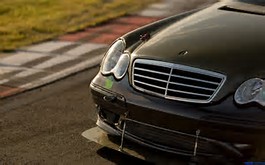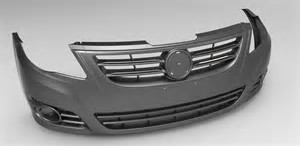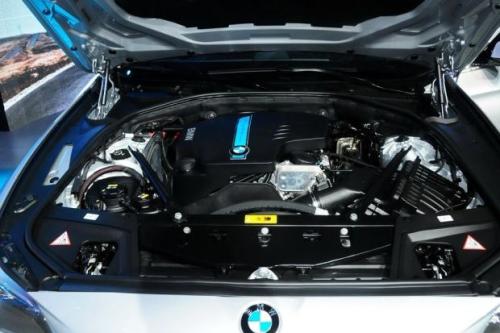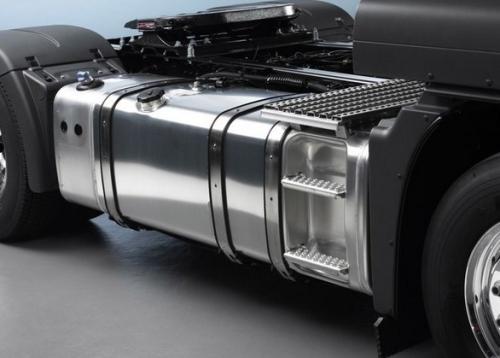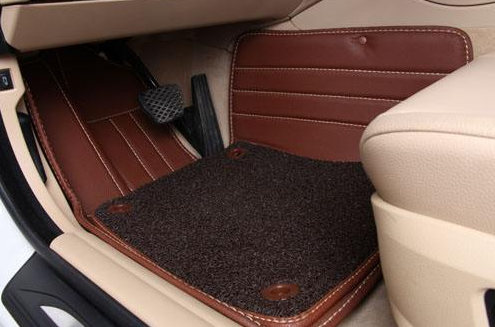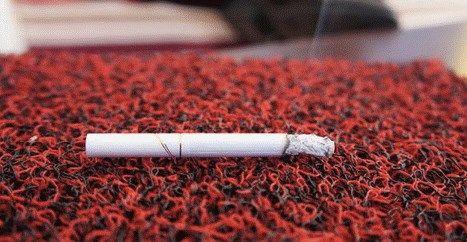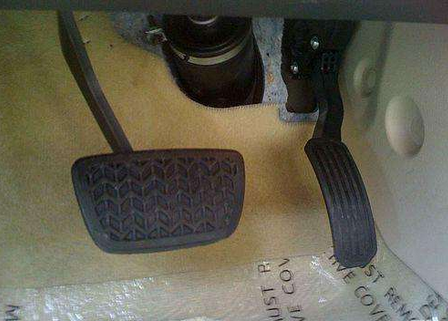On October 8, the news of the fraud of the Japanese steel company Kobe Steel was revealed. The Kobe Steel Institute, which was founded in 1905, admitted on the same day that during the period from September 2016 to the end of August 2017, violations of the contract tampered with quality data such as strength and dimensions. The products involved included 19,300 tons of aluminum parts and copper. There are 2,200 tons of products and 19,400 aluminum forgings, accounting for about 4% of the annual sales of aluminum and copper. According to relevant media reports, this part of the product may have flowed to nearly 200 customers, affecting aviation, automotive, space rockets and other fields. Japanese automakers such as Toyota, Nissan and Mazda have conducted surveys to confirm whether products such as aluminum, copper and steel products supplied by Kobe Steel will affect the safety of their vehicles. Among them, Toyota said that the consequences of the problem are very serious, and pointed out that the materials provided by Kobe Steel are mostly used in the hood, the rear door and the outer area of ​​the vehicle. Vehicle safety has always been the focus of attention in the automobile manufacturing industry. The explosion of the steel fabrication fraud at Kobe Steel once again pushed security issues to the cusp of public opinion. With the current development of automotive technology and the increasing demand for lightweighting of automobiles, in addition to widely used steel materials, more and more new materials have been added to automobiles. Materials such as carbon fiber, engineering plastics, nylon, and resin have been used for bodywork and zero. Parts replace traditional cast iron, alloy and glass materials. Are these body materials safe? What other security risks are easily overlooked? Let's take a closer look. Bumper: Plastic material is reliable? The bumper, as an essential part of the passive safety of the vehicle, is functionally an important safety component to protect the vehicle. Early car front and rear bumpers were mainly made of metal materials, generally made of steel stampings, riveted or welded together with the frame rails. Today's car bumpers are made of plastic material, no longer a hard metal bumper, many people wondering why the metal bumper was eliminated, but also questioned the safety of the plastic bumper. In fact, the use of plastic materials is mainly due to many drawbacks of metal bumpers. For example, it is difficult to repair after an accident. When an accident occurs, the impact force is relatively large. Vehicles are affected by collisions more severely. The impact is relatively large, metal bumpers increase vehicle weight, increase vehicle fuel consumption. The primary role of modern bumpers has changed from the structural components that protect the car body to being functional accessories that are mainly pedestrian-oriented and reduced damage. Mainly uses the toughened (modified) polypropylene material as the raw material for injection molding (polypropylene plastic, commonly known as PP material), this material has the advantages of light weight, corrosion resistance, high product strength, good rigidity, especially by impact PP. Copolymer, styrene-based elastomer, and polyolefin-based rubber blended modified material with high rigidity, impact resistance, scratch resistance, and paintability. After injection molding bumper loading, it is 8km/h. The impact is not broken, and it has resilient elasticity. The performance is similar to that of polyurethane, and the cost is reduced by 10% to 20%. Due to the good elasticity of the plastic, the impact force can be effectively mitigated by combining the inner filled plastic foam material. With the rational design of the front bar, the plastic bumper can effectively reduce the degree of injury when the pedestrian is hit, and it is also easier to repair. Reducing manufacturing costs and maintenance costs, but also help the body to lose weight. However, the disadvantage is poor low temperature resistance. Fuel tank: safety and material independence Currently, various brands on the market use different fuel tanks according to the characteristics of different models. Some Mercedes and Jaguar models use metal fuel tanks, Lexus IS uses multi-layer resin fuel tanks, ES uses steel tanks, and NX uses iron fuel tanks. However, since the plastic tank can reduce the weight, it can provide a larger volume under the same conditions, it has strong plasticity, it can design the tank shape according to the needs of the car body, and the cost is lower, so many models start using the plastic tank. In the fuel tank collision fire accident, many people questioned the fuel tank material is the culprit to devour human life, then plastic and metal fuel tank which in the event of rear-end, collision, more secure? According to industry experts, vehicles are designed to place fuel tanks in the non-collision area of ​​the vehicle. In accordance with the requirements of most countries or regions in the world, fuel tanks installed on vehicles must be able to meet the requirements of no leakage when the vehicle collides with a speed of 50km/h. Claim. Therefore, it is not directly related to whether the fuel tank material will leak and cause combustion after a rear-end collision. In fact, the model uses the material of the fuel tank, which is mainly related to the consideration of the performance of the vehicle. Metal tanks and plastic tanks have their own advantages. However, no matter which material is used, the manufacturers will carry out targeted technical protection according to the standards. Therefore, the materials are insufficient to affect the safety of the tanks in the event of a collision, as long as the tank itself can meet the national standards and performance. And design requirements, there is no problem. In the “National Standard for the Use of Vehicle Fuel Tanks†(GB18296-2001) that has already been issued, it is stipulated that automotive products produced by automobile companies must pass the fuel tank cap tightness test, safety valve opening pressure test, vibration durability test, and fuel tank. Pressure and other tests. Both the metal tank and the plastic tank need to be strictly tested by national standards. Footpad: Actually it is invisible danger of using invisible mines. The car foot pad sets water absorption, vacuuming, decontamination, sound insulation, and protection of the main body of the blanket. It protects the car from outside the car and is clean and beautiful and comfortable. From the material of the car mat, it is divided into chemical fiber mats, linen mats, PVC mats, rubber mats, woolen mats, leather mats, and mats. The function of absorbing and decontaminating the car floor mat can effectively prevent the residual moisture and dirt caused by the sole from slipping with the clutch, brake and throttle, and avoid potential safety hazards. The selection of a thick substrate can prevent chassis noise and tire noise, and improve Comfortable driving; suede car mats can also completely absorb the remaining noise and echo sound in the car, and protect the hearing. However, improper use of car mats can also cause huge safety risks. The early Toyota “accelerated door†incident caused shocks in the industry. The results of the multi-disciplinary investigation revealed that the main cause of the accident was the problem of the accelerator pedal and the mat. In some cases, the mat would jam the accelerator pedal. Therefore, no matter what kind of material mat, first cut the shape is very important, reasonable cutting can avoid interference with the accelerator pedal; second, the mat must be firmly fixed, absolutely avoid sliding forward, and interfere with the pedal, causing safety hazards. Finally, look at the mat material. The Ningbo Entry-Exit Inspection and Quarantine Bureau has conducted sampling inspection on car mats. The first indicator is VOC (Volatile Organic Compounds). This is the main indicator for evaluating the content of toxic and harmful gases in automobiles. The second is the detection of fire-retardant materials. Not easy to burn. These two projects are critical, affecting the health of the occupants and the safety of personal and property. From the results, out of the 22 samples, there were 5 samples with VOC detection exceeding the limit, the most serious of which was formaldehyde overrun. The samples of the five groups with high risk potential were rubber, coils, and fibers. It can be seen that rubber mats, coils, and fiber mats are more volatile than other materials. In the VOC content, the most serious is formaldehyde. There are 17 samples that exceed the maximum concentration limit of formaldehyde in the vehicle. The average value exceeds the limit of 12.3 times and the maximum limit exceeds 127.3 times. There are 13 groups that exceed the maximum concentration limit for acetaldehyde in the car. The average value exceeds the limit by 9.2 times, and the maximum limit exceeds 70.9 times. Fortunately, in the testing of flame-retardant items, all of the pads conformed to the national mandatory testing standards. In the car, especially during the season when the temperature is high, the content of volatile organic compounds such as formaldehyde and acetaldehyde released from the mat in a high temperature environment will rise sharply, which will seriously threaten people's health. Therefore, the occupants enter the high temperature exposure. When in the compartment, immediately drive the window to ventilate and cool, wait until the temperature inside the car drops to a certain degree before entering the compartment. At the same time, the relatively more environmentally friendly mats such as leather, linen and PVC plastic should be used as far as possible. Accelerator pedal arm: plastic material is not cutting corners In the early days when the accelerator was controlled by cable, the accelerator pedal and pedal arm were made of cast iron and other metal materials. Nowadays, many cars use electronic throttles, fuel injection depends on electronic signal control, plus vehicle safety design standards and fuel economy performance. With increasingly stringent requirements for lightweighting, the accelerator and pedal arms of most models currently on the market are made of plastic. Some people may say that changing plastics from cast iron is a junkie, but it is not. Take the common PA6 material (nylon) accelerator pedal arm as an example. After being reinforced, its strength is equal to that of the metal pedal arm, as long as it is not repeatedly hard and fierce, there will be no problem until the vehicle scraps the entire pedal. In addition, if a frontal collision occurs in the vehicle, the collapsible pedal arm can also be reversely fractured, so that the impact on the driver's leg can be relieved, and the injury to the human body can be reduced, thereby improving the safety. Large shade material: polycarbonate is safer than glass At present, the glass covers of the headlights and taillights of vehicles use polycarbonate injection molding. The polycarbonate not only has good hardness and strength, but also has good toughness, can resist UV rays, has excellent light transmission performance, and does not change color during long-term use, and has high transparency. The large lampshade was made of glass in the past. Due to the low strength of the glass, collision and fragmentation can easily cause harm to people. Therefore, the large lampshade is now made of polycarbonate. Under the general trend of energy conservation, consumption reduction and light weight, with the constant innovation and development of automotive materials, more new materials will be integrated into the automotive material family, bringing a brand new driving experience to people and will also lead our cars. The era entered a new era. The incident at the Kobe Steel Institute has sounded a warning for car safety, reminding us that we should pay enough attention to the safety issues related to life at any time. How to promote the balanced development of automotive technology in material innovation and vehicle safety in the future is the direction that auto manufacturing experts are striving for, and Gasgoo will continue to pay attention. Monoblock Spool Valve,Hydraulic Monoblock Ball Valve,Hydraulic Directional Control Monoblock Valve,Monoblock Valve Hdraulic Jiangsu Xibang Hydraulic Machinery Co.,Ltd , https://www.xibanghydraulic.com